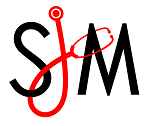Maxine Stachel, MD
Sackler Alumni ‘16 New York University (Physician-Scientist Pathway Residency)
(PDF)
Earlier this year, when deciding my residency, I matched into my first choice: the “Physician Scientist” residency at New York University (NYU), a seven-year commitment that allows me to complete internal medicine residency in two years (instead of three), cardiology fellowship in two years (instead of three), and then pursue 3 years of “protected” research (meaning guaranteed funding, with only 15- 20% of my time in the clinic). As I transition from the bedside to the bench, I will have the opportunity to take advanced coursework in applicable fields to refresh and refine my research acumen. The faculty will provide advising and grant-writing support, and if I’m productive, may fund a technician or two to assist me. In my 7th year, I will become NYU faculty. Most applicants have an MD/PhD (I didn’t), but you do need to have a strong research record in order to be competitive.
When pursuing a career in academic medicine, there are a number of options you might consider. The research track I outlined (also called the “ABIM research pathway” or, confoundingly, “fast-track”) can be adapted to any internal medicine fellowship path (Heme/Onc, GI, etc.); in all cases, it takes one year off of the usual fellowship length. Knowing the exact area of interest may not be absolutely necessary, but it will help definitely frame your prior research experience and plans into a coherent narrative. Most major universities offer this track; in NYC, Columbia, Cornell, NYU & Mt. Sinai each takes approximately 2 people per year. The research pathway also exists for pediatrics and its fellowship tracks with additional information found through the American Board of Pediatrics. Lastly, if a 7-year commitment may sound overwhelming, the clinical investigator tracks, which are less intensive and less selective, are offered at some institutions and involve taking part in research electives during an otherwise traditional residency.
When interested in a specific institution, I’d recommend looking up their program leadership and email them directly for more information. Also, consider emailing prospective PIs with your CV and statement of intent. Regardless of your intended path, the third year of medical school is the time to start thinking about what you want from a program and what those programs will want from you—and then decide how to tell them you have those qualities/credentials
